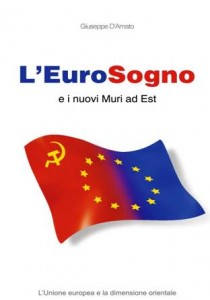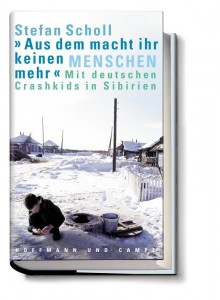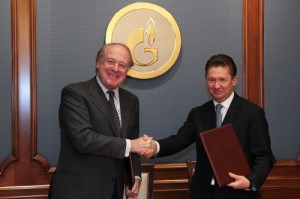Energy&Economy
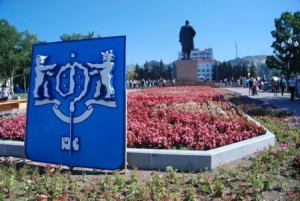 A Juzhno-Sakhalinsk, ogni trenta minuti, gli altoparlanti sistemati nelle strade e piazze principali rilanciano il bollettino delle radiazioni. Fukushima si trova al di là del mare ad un migliaio di chilometri più a sud. La vita prosegue tranquilla anche se i 173mila abitanti della città isolana sono preoccupati. Bere l’acqua in bottiglia è la prima cosa da fare come stare il meno possibile all’aperto.
A Juzhno-Sakhalinsk, ogni trenta minuti, gli altoparlanti sistemati nelle strade e piazze principali rilanciano il bollettino delle radiazioni. Fukushima si trova al di là del mare ad un migliaio di chilometri più a sud. La vita prosegue tranquilla anche se i 173mila abitanti della città isolana sono preoccupati. Bere l’acqua in bottiglia è la prima cosa da fare come stare il meno possibile all’aperto.
Per tranquillizzare la gente, che non si fida dei soliti “funzionari” il premier Putin si è precipitato fin quaggiù quasi subito dopo lo tsunami di marzo. 6,5 milioni di russi vivono nell’Estremo oriente e Vladivostok dista soltanto ottocento chilometri ad ovest della centrale giapponese. I venti per ora spirano verso est, verso il Pacifico e gli Stati Uniti.
Dozzine di specialisti federali sono stati inviati da Mosca nel Sol Levante per controllare da vicino la situazione. La loro esperienza, fatta a Cernobyl, potrebbe tornare utile.
Nei mesi scorsi le relazioni russo-giapponesi sono state roventi per il riaccendersi della disputa per le isole Curili meridionali. I due Paesi non hanno ancora nemmeno firmato il Trattato di pace a conclusione della Seconda guerra mondiale per la questione dei confini. Dopo l’incidente di Fukushima il Cremlino avrebbe voluto raffreddare i rapporti tesi, ma i giapponesi hanno risposto picche.
Mosca, a questo punto, starebbe valutando di far entrare compagnie di Tokyo nell’azionariato per lo sfruttamento dei grandi campi siberiani di Kovykta e di Chayanda in Jakuzia. Putin ha anche dato disposizione di mettere a disposizione del Sol Levante la maggiore quantità possibile di idrocarburi per i prossimi mesi. L’obiettivo primario è far dimenticare i recenti ordini del presidente Medvedev di dislocare immediatamente sulle Curili armi di ultima generazione in funzione anti-nipponica.
Kazakhstan, sempre nel segno di Nazarbaiev.
4 Apr 2011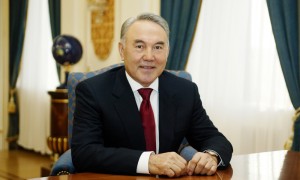 E’ andato tutto secondo le previsioni della vigilia. L’affluenza alle urne è stata alta e Nusurtan Nazarbaiev ha vinto le presidenziali anticipate con un ampio distacco. La Commissione elettorale ha comunicato che l’89,9% degli aventi diritto ha partecipato al voto, oltre il 13% in più rispetto al 2005. Il presidente uscente ha ottenuto il 95,5% delle preferenze, mentre nessuno dei suoi tre sfidanti ha superato la barriera del 2%.
E’ andato tutto secondo le previsioni della vigilia. L’affluenza alle urne è stata alta e Nusurtan Nazarbaiev ha vinto le presidenziali anticipate con un ampio distacco. La Commissione elettorale ha comunicato che l’89,9% degli aventi diritto ha partecipato al voto, oltre il 13% in più rispetto al 2005. Il presidente uscente ha ottenuto il 95,5% delle preferenze, mentre nessuno dei suoi tre sfidanti ha superato la barriera del 2%.
Varie organizzazioni internazionali, che hanno monitorato le elezioni, hanno espresso giudizi non troppo positivi. Il potere ha ampliamente utilizzato le classiche “risorse amministrative”. L’opposizione ha preferito non partecipare a queste consultazioni, poiché ha avuto meno di due mesi per trovare un unico candidato.
Da dopo l’approvazione degli emendamenti alla Costituzione nel 2007 sono state tolte gran parte delle limitazioni per concorrere alla prima carica del Paese. Il settantenne Nazarbaiev è capo della repubblica asiatica fin dai tempi sovietici: nel 1984 premier, nel 1989 segretario del Partito comunista, quindi presidente. Questa è la sua quarta riconferma. Le elezioni si sarebbero dovute tenere nel 2012, ma il presidente ha preferito anticiparle dopo che un gruppo aveva proposto in Parlamento di tenere un referendum per allungargli il mandato fino al 2020.
Estesa quasi un quinto dell’Europa e con solo 16 milioni di abitanti appartenenti alle più diverse etnie, il Kazakhstan ha goduto nell’ultimo decennio dei benefici prodotti dal boom dei prezzi delle materie prime a livello internazionale e sta costruendo magistrali energetiche sia verso est che verso ovest. Importante è il progetto Eni di Kashagan sul Caspio.
Nazarbaiev garantisce la stabilità in un’area strategica per la Russia e per l’Occidente, guardata con sempre maggiore attenzione anche dalla Cina. Rispetto ai suoi colleghi regionali ex sovietici il presidente kazakho è considerato un leader illuminato nonostante alcuni scandali che hanno coinvolto la sua famiglia. La sua successione rappresenta un vero punto interrogativo, poiché l’opposizione non ha candidati all’altezza, alcuni politici di primo piano sono in passato espatriati all’estero e tra le file del potere non si intravedono possibili “delfini”. Si vive, quindi, alla giornata, contando che la popolazione si arricchisca e si abitui ad un sistema il più rassomigliante possibile alla democrazia.
Energia: lo scoglio del Terzo pacchetto.
27 Feb 2011Da anni non si assisteva ad un incontro con così tanti ministri russi e commissari europei. Ma a Bruxelles José Manuel Barroso e Vladimir Putin avevano un’agenda ricca di punti da discutere, molti dei quali assai complessi.
A parte la questione dell’adesione di Mosca al Wto e quella della cancellazione bilaterale dei visti il nodo del cosiddetto Terzo pacchetto energetico l’ha fatta da padrone. Mosca è preoccupata per la sua entrata in vigore quest’anno. La clausola principale è che in Europa i proprietari delle materie prime non potranno più detenere le reti di trasporto.
“Questo documento – ha detto Putin – contraddice i precedenti accordi bilaterali in materia energetica. Il prezzo del gas crescerà dell’8-10%”. Di diversa opinione gli europei. “Non è un documento discriminatorio contro la Russia – ha chiarito Barroso -. Servirà per demonopolizzare il mercato energetico”.
Il ministro dell’Energia Serghej Shmatko è apparso più conciliante nei toni del suo premier. Il primo scoglio da superare è la questione della pipeline, detenuta da Gazprom in Lituania, che dovrebbe essere messa in vendita dai russi. Mosca vorrebbe ottenere poi anche un’esenzione sulla proprietà del gasdotto Nord Stream.
Un qualsiasi accordo in materia è ancora lontano, ma sia Bruxelles che Mosca non hanno interesse a forzare la mano. Con la precaria situazione in nord Africa il petrolio ed il gas russi diventano sempre più importanti per l’approvvigionamento continentale, mentre i petro-rubli sono cruciali in questo momento in cui l’ex superpotenza entra nella lunga campagna elettorale per il rinnovo della Duma in dicembre e per le elezioni presidenziali in marzo.
Беларусь, итоги ВВП в 2010 г.
15 Feb 2011 «В 2010 г. ВВП Беларуси вырос на 7,6 проц по сравнению с 2009 г до 163 трлн бел руб. Объем выпуска промышленной продукции в 2010 г составил 161,9 трлн бел руб (+11,3 проц), сельхозпродукции – 30,8 трлн бел руб (+2 проц).
«В 2010 г. ВВП Беларуси вырос на 7,6 проц по сравнению с 2009 г до 163 трлн бел руб. Объем выпуска промышленной продукции в 2010 г составил 161,9 трлн бел руб (+11,3 проц), сельхозпродукции – 30,8 трлн бел руб (+2 проц).
Беларусь в 2011 году должна снизить энергоемкость ВВП на 6-7% по сравнению с уровнем 2010 года при прогнозируемом темпе роста ВВП 9-10%.
Рост белорусского ВВП в январе 2011 года составил 7,4% по сравнению с аналогичным периодом 2010. В текущем году Беларусь должна обеспечить 10% рост ВВП, при этом снизив его энергоемкость на 6-7%. Рост валового внутреннего продукта Беларуси в январе 2011 года составил по сравнению с аналогичным прошлогодним периодом 7,4% до 12,043 трлн бел руб при годовом прогнозе 9-10%, сообщает Национальный статистический комитет. Напомним, по итогам 2010 года ВВП вырос на 7,6%, в январе 2010 года к январю 2009-го — на 0,6%. По оценке Белстата, ВВП в январе 2011 года составил 12 трлн. рублей».
Статья – БДГ Деловая Газета
Газ для Европы станет дороже в 2011 г.
11 Feb 2011МОСКВА, 11 февраля. Стоимость экспорта российского газа в Европу вырастет в этом году примерно на 15% — до $352 за тысячу кубометров. В 2010 году средняя цена тысячи кубометров газа составляла $306, сообщает РБК. Объем экспорта российского газа в страны европейского региона увеличится, по оценкам «Газпрома», примерно на 9% — со 139 млрд кубометров в прошлом году до 151,5 млрд кубометров по итогам текущего года.
Кроме того, концерн планирует постепенно наращивать объемы добычи газа, и уже к 2020 году по сравнению с 2010 годом этот показатель должен увеличиться почти на 28% — до 650 млрд кубометров. К 2030 году газовый монополист планирует добывать около 725 млрд кубометров «голубого топлива». Добыча на Ямале к этому времени составит около 350 млрд кубометров. Как сообщил РБК один из участников встречи менеджмента компании с инвесторами, к 2030 году «Газпром» планирует завоевать 14% мирового рынка производства сжиженного природного газа (СПГ). При этом к 2015 году доля концерна на этом рынке будет доведена до 3%, к 2020 году — до 9%, к 2025 году — до 13%, а к 2030 году — до 14%.
План удвоения ВВП в России провалился.
19 Jan 2011Задача по удвоению ВВП выполнена менее чем на 60%, подсчитали в компании ФБК. Как показывают расчеты “Финмаркета”, чтобы достичь удвоения реального ВВП по сравнению с 2000 годом, при среднем росте ВВП на 4% понадобится еще 6 лет, а при росте на 5% в год – более 4,5 лет
Статья – FinMarket – 18.01.2011
During January-December 2010 the average price for Russian Urals oil was 78.2 dollars per barrel, said the specialist for the Ministry of Finance Alexander Sakovich. According to him, in 2009 the same price was at 61.065 dollars a barrel.
Earlier, the Ministry of Economic Development had raised the forecast of oil prices in 2010 and 2011. The updated forecast for 2010 was 77.5 dollars per barrel compared to $ 75 budgeted. At the beginning of December Russian Finance Minister Alexei Kudrin said that over the next three years the price of oil might fall below 60 dollars per barrel for a period of up to six months. In the past, he underlined, the price of oil was above 70 per barrel only for two years, and the rest of the time in the last decade it was below 70. “And we are planning that it will remain above the 70, and we’ll live with it,” said a worried Kudrin.
He also highlighted that now Russia is in a situation of “high enough” state budget deficit. Today with oil prices at $ 75 per barrel Moscow has a shortfall of 4.6% of GDP. In 2007 with the oil price of 70 dollars per barrel Russia had a surplus of 5% of GDP. So it is time to cut the State expenses.
Russian Outlook – EuropaRussia 2010-2011
—
Estonia, Euro Happy End.
1 Jan 2011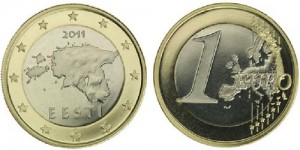 The dream has become reality. Estonia is now totally part of Europe after Tallinn’s adoption of the Euro. The long path, begun in the Eighties of the 20th century when the Baltic republic was enclosed forcefully in the USSR, has come to the most cheerful happy end.
The dream has become reality. Estonia is now totally part of Europe after Tallinn’s adoption of the Euro. The long path, begun in the Eighties of the 20th century when the Baltic republic was enclosed forcefully in the USSR, has come to the most cheerful happy end.
After getting its independence from the Kremlin in 1991 Estonia started moving westwards away from the dominance of its mighty neighbour. In 2004 Tallinn entered the European Union and NATO. But it was not enough for the young Estonian rulers. “We are at sea in a small boat tied to an ocean liner. In a storm or otherwise, we’d feel better being on board,” explained the Estonian Minister of Finance Jürgen Ligi why his country had decided to become the 17th State to use the common currency.
And without any doubt for the Baltic state of 1.3 million inhabitants, being in the Eurozone club is preferable to uncertainty linked to its outgoing kroon currency and is seen as a way to attract further investment. “In Estonia we are also sure that the euro will support trade,” Prime Minister Andrus Ansip told Reuters, pointing to gains for ordinary people. “Now people are just wasting their money in the currency exchange, why do they have to do that?” he said.
Estonia’s debt and budget deficit are among the lowest in the Eurozone. To meet the common currency entry terms, Ansip’s centre-right government made budget deficit cuts equal to more than 9 percent of GDP. Inflation also fell as the economy contracted nearly 14 percent in 2009 after a pre-crisis boom.
The European Commission raised in its fresh autumn forecast Estonia’s economic growth forecast to 2.4% for the year 2010 and 4.4% for 2011. In 2012 the economy should grow 3.5%.
“The foreign policy goals of Estonia have been to embed itself in as many international organisations and clubs as possible, so that it will never find itself isolated or without friends ever again,” Andres Kasekamp, director of the Estonian Foreign Policy Institute said. “Membership of the Eurozone will not only boost Estonia’s economic prosperity, but will enhance security,” he added.
But there are some sceptics. “Welcome to the Euro Titanic” is their slogan. “We are joining at the worst possible time and cannot be sure the Eurozone will exist in the same form as it does now. Even in 2011 there could be very big changes or reforms,” said lawyer Anti Poolamets, who lead an anti-Euro campaign.
Gazprom, Eni strategic partners till 2012.
24 Dec 2010Russia’s Gazprom and Italy’s Eni have extended their 2006 strategic partnership until 2012. The companies signed agreements for technical-scientific cooperation in the upstream and downstream sectors. Integrated working groups will be set up to study application of drilling, production, transportation, energy saving and liquefied natural gas (LNG) technologies and processes, as well as personnel training, Gazprom said.
Under the 2006 agreement, Eni and Gazprom have launched joint projects in mid and downstream gas, in the upstream sector and in technological cooperation, including the South Stream gas pipeline project to bring Russia’s gas to Europe.
Alexey Miller, Chairman of the Gazprom Management Committee and Paolo Scaroni, Chief Executive Officer of Eni, also discussed gas supplies to Italy and implementation of measures for French EDF entry in the shareholding structure of South Stream AG..
Economic Outlook – BALTIC STATES, December 2010.
17 Dec 2010Latest Data – December 2010.
The economic crisis in the Baltic states has begun to ease. “Growth prospects will depend on how well these countries can shift to a more export-oriented model,” Mark Allen, senior IMF resident representative for Central and Eastern Europe.
1. Estonia
In 2009 GDP -13,9%. According to Statistics Estonia, by flash estimates, the gross domestic product (GDP) of Estonia increased by 4.7% in the 3rd quarter of 2010 compared to the same quarter of the previous year. Q3 2010: 4.7%; Q2 2010: 3.1%; Q1 2010: -2.0%. This change was influenced by the growth of value added in the manufacturing activity created owing to a vigorous growth of exports.
The European Commission raised in its fresh autumn forecast Estonia’s economic growth forecast to 2.4% for the year 2010 and 4.4% for 2011. In 2012 the economy should grow 3.5%.
The Commission forecasts unemployment at 17.5% this year, 15.1% next year and 13.6% in 2012. Inflation should be 2.7% this year, 3.6% next year and 2.3% in 2012
EURO – “We are at sea in a small boat tied to an ocean liner. In a storm or otherwise, we’d feel better being on board,” is how Estonian finance minister Jürgen Ligi describes his country’s determination to join the euro zone from January 1st, writes Bloomberg.
Estonia’s budget deficit may be about 1.3 percent of gross domestic product this year, Finance ministry said.
2. Latvia
In 2009 the GDP shrank 18%, the worst fall in the European Union. A 7.5 billion euro bailout was led by the International Monetary Fund and the European Commission in 2008. Latvia expects a 0.4% fall in the economy in 2010. In 2011 the growth is expected to be around 3.3%. Government debt will peak at about 50.4 percent of GDP, according to the IMF.
The targeted deficit cut was 280 million lats ($541 million) in the 2011 budget so the expected deficit reduction measures would be worth 2 percent of GDP. Latvia had already taken measures worth 1 billion lats in 2009 and 2010 to cap the deficit. Some of the austerity measures included public sector job losses and wage cuts by up to 50 percent as well as higher personal income tax rates and and a rise in value added tax. In 2011 the targeted budget deficit will be 6% of gross domestic product.
3. Lithuania
In 2009 Lithuania’s economy shrank 14,7%. In 2010 GDP Q3 2010: +0.6%, Q2 2010: +1.1%, Q1 2010: -2.0%. The government forecasts the economy will expand 1.6% in 2010. The 2011 budget was approved by the Lithuanian Parliament on December 9th. The targeted budget deficit will be 5.8% of GDP. Unemployment reached 17.8% in 2010.
Welcome
We are a group of long experienced European journalists and intellectuals interested in international politics and culture. We would like to exchange our opinion on new Europe and Russia.
Categories
- Breaking News (11)
- CIS (129)
- Climate (2)
- Energy&Economy (115)
- EU Eastern Dimension (85)
- Euro 2012 – Sochi 2014 – World Cup 2018, Sport (43)
- Euro-Integration (135)
- History Culture (198)
- International Policy (261)
- Military (74)
- Interviews (18)
- Italy – Italia – Suisse (47)
- Odd Enough (10)
- Poland and Baltic States (126)
- Religion (31)
- Russia (421)
- Survey (4)
- Turning points (4)
- Ukraine (176)
- Российские страницы (113)
Archives
- November 2020
- October 2020
- September 2020
- August 2020
- July 2020
- May 2020
- April 2020
- March 2020
- January 2020
- December 2019
- November 2019
- October 2019
- September 2019
- August 2019
- July 2019
- June 2019
- May 2019
- April 2019
- March 2019
- February 2019
- December 2018
- November 2018
- October 2018
- September 2018
- August 2018
- July 2018
- June 2018
- May 2018
- April 2018
- March 2018
- February 2018
- January 2018
- December 2017
- November 2017
- October 2017
- September 2017
- August 2017
- July 2017
- May 2017
- March 2017
- January 2017
- December 2016
- November 2016
- October 2016
- September 2016
- July 2016
- June 2016
- May 2016
- April 2016
- February 2016
- January 2016
- November 2015
- October 2015
- September 2015
- June 2015
- April 2015
- March 2015
- February 2015
- January 2015
- December 2014
- November 2014
- October 2014
- September 2014
- August 2014
- July 2014
- June 2014
- May 2014
- April 2014
- March 2014
- February 2014
- January 2014
- December 2013
- November 2013
- October 2013
- September 2013
- August 2013
- July 2013
- June 2013
- May 2013
- April 2013
- March 2013
- February 2013
- January 2013
- December 2012
- November 2012
- October 2012
- September 2012
- August 2012
- July 2012
- June 2012
- May 2012
- April 2012
- March 2012
- February 2012
- January 2012
- December 2011
- November 2011
- October 2011
- September 2011
- August 2011
- July 2011
- June 2011
- May 2011
- April 2011
- March 2011
- February 2011
- January 2011
- December 2010
- November 2010
- October 2010
- September 2010
- August 2010
- July 2010
- June 2010
- May 2010
- April 2010
- March 2010
- February 2010
- January 2010
- December 2009
- November 2009
- October 2009
- September 2009
- August 2009
Our books


